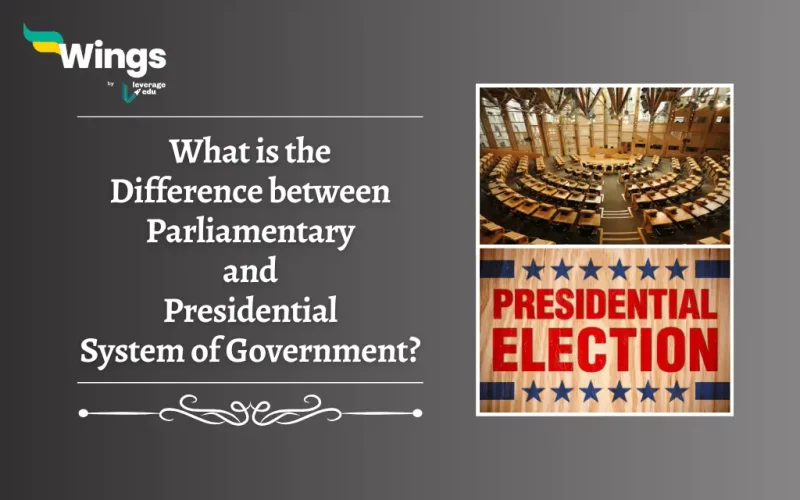The Parliamentary and Presidential Systems of Government are two different ways Governments function. India has a Parliamentary system that is distinguishable from the Presidential system. Moreover, a Parliamentary system unites the Executive and Legislative branches, with the Prime Minister leading the party holding a majority in Parliament. On the other hand, the President in a Presidential system is both Head of State and Government, with a clear separation of powers from the Legislature. Hence, this difference demarcates how laws are passed, leaders are held accountable, and power is distributed. Read on to know the details of the Difference between Parliamentary and Presidential Systems of Government!
Difference between Parliamentary and Presidential System of Government
Furthermore, here is a detailed difference between both:
| Difference between Parliamentary and Presidential Systems of Government | ||
| Feature | Parliamentary System of Government | Presidential System of Government |
| Head of State | Ceremonial: President. | Executive: President. |
| Head of Government | Prime Minister. | President. |
| Separation of Powers | Fused: The Executive is a part of the Legislature (Parliament). | Separated: The Executive and Legislature are separate. |
| Election of Executive | Indirect: Prime Minister elected by the majority party/alliance in the lower house (Lok Sabha) | Direct: President elected by citizens or the electoral college. |
| Role of Parliament | Primary legislative body; makes laws, and debates policies. | Legislature with limited power to check the Executive. |
| Role of President | Ceremonial; Executive power exercised by the Prime Minister. | Executive powers to veto, appoint officials, etc. |
| Removal of Executive | Vote of no-confidence in the Parliament. | Impeachment or in some cases, recall elections. |
| Stability of Government | Generally more stable due to party discipline and coalition governments. | Can be less stable due to potential conflicts between the President and Legislature. |
| Accountability | Prime Minister and Council of Ministers are accountable to the Parliament. Can be removed through a vote of no confidence. | President is not directly accountable to the Legislature. |
| Flexibility in Governance | More flexible due to the ability to change the Executive without elections. | Less flexible due to fixed terms for the President. |
| Example | India, United Kingdom, Canada. | United States of America, Brazil. |
Related Blogs
Lastly, we hope you liked our blog and gained an understanding of the Difference between Parliamentary and Presidential Systems of Government. Moreover, you may even read more blogs and empower yourself with knowledge regarding Civics and Polity!
 One app for all your study abroad needs
One app for all your study abroad needs















 45,000+ students trusted us with their dreams. Take the first step today!
45,000+ students trusted us with their dreams. Take the first step today!
